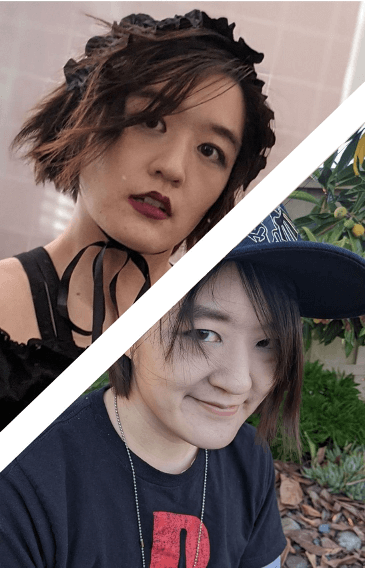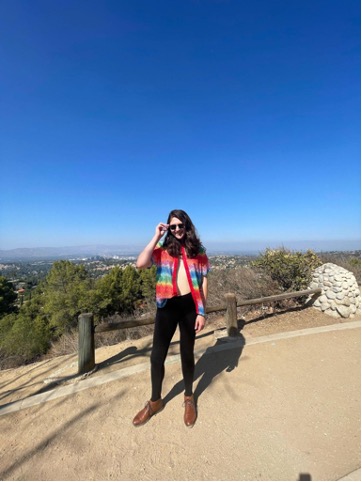
During Pride Month we are sharing stories from members of Qualtrics Pride – our Q group dedicated to ensuring members of the LGBTQIA+ community feel safe and included. We are sharing stories about the challenges of coming out, understanding identity, allyship, and unconscious bias.
With stories from Tzong and Nicole, this post focuses on understanding the intersectionality of an individual's different identities, discovering how to unite those identities together, and the liberation that comes from being your full authentic self.
Tzong-Lian Tsay | Software Engineer | Provo | they/them/theirs | Gender Non-conforming/Non-binary/Transgender

Disney’s Mulan (1998) was my childhood heroine. I didn’t understand why at the time, but now I recognize it’s because she was the epitome of “gender non-conforming.”
“You should have been born a man,” my traditional (and very feminine) mother would often mutter. Looking back, she feared for my future. The world is not kind to people who are Different, so she tried to guilt me into “acting more feminine.” But I knew I could not change who I really was. It’s not a choice. So her constant refrain just made me feel like she would prefer another daughter.
In the Disney movie, Mulan joins the army, ostensibly to protect her father. The entire movie goes on to lampoon how gender roles are equal-part absurd, equal-part treacherous. At the film’s climax, Mulan realizes she actually joined the army for herself: having failed at “being female,” she wanted to prove that she was still someone worthwhile.
Like Mulan, my strengths were in my intelligence and determination, and I excelled in school (especially in math and science). Most people assume that my academically-obsessed Asian parents pushed me to become valedictorian, but it was actually the opposite. My mom actually tried to dissuade me because she didn’t think I was smart enough and was afraid I would fail. Proving her wrong motivated me… as well as trying to gain her acceptance
A few years ago, I learned about a new gender: non-binary. And it liberated me. I wasn’t the only one who didn’t neatly fit the gender binary, nor did I need to “choose” between male or female. In the past, I would often suppress any desires I felt were too “feminine.” Now I take sewing classes and dress up in cute outfits. I used to force myself to try and befriend more girls because “it was inappropriate that most of my friends were male.” (It was often awkward for everyone involved, and sometimes I put up with bullying so they would “befriend” me.) Now I just hang out with anyone I feel comfortable with, irrespective of gender identity.
My mother has come to accept that this is just how I am. She is overjoyed that I’m more “feminine” these days, while simultaneously baffled why I seem to be more “masculine” as well (the non-binary concept still eludes her). But she recognizes that I’m far happier than I used to be.
Accepting everything about myself – stereotypically masculine, stereotypically feminine, everything non-gendered and in-between – has made me more whole and free than ever. Just like Mulan, I’ve come to realize: I don’t have to prove anything to anyone. Just be “true to your heart.”
Nicole | Senior XM Consultant | Reston | she/her/hers

From Argentinian rooftops to wandering the streets with strangers, to 3 am phone calls, to deep meaningful conversations across the globe, everyone who came in and out of my life, for a short time or a long time, asked me the famous Biblical question: "Where are you?" And it took till 5782 (the current Jewish calendar year) for me to finally discover how to answer.
The question, "where are you," appeared in all the trials and tribulations of my life from adolescence to adulthood as a young Jew. For years I would answer "I am here." Whether the dialogue focused on family or major decisions, I could keep under the surface a growing insecurity and discomfort in myself. "I am here," would allow me to vet the questions asked and answer in a tailored fashion. Each response emphasized the superficial and codified new patches to maintain the appearance I needed to survive in my environment. In keeping a small scope with the response "I am here", I sought to control every ounce of the narrative. If I chose which questions to answer and to censor my responses, I could avoid the response said by a select few in Old Testament: in response to G-d, in response to an angel on behalf of G-d, in response to a parent's call to a child, and in response to a child's call to a parent. I could make every day Purim – a holiday where you dress in costume and masks. I could mask as the role I wanted to play rather than the role I was assigned.
With time, the patches that held together my masked self started to wear down. It seemed as though no matter how many avenues I sought to find new patches, none would stay. Inside the same book and faith, where the response I kept avoiding came from, lived an abundance of rich lessons waiting for me to explore. Kavanah, or intentionality, ascended to the top. First I looked at my life with an intentional lens. For each problem presented I sought to show my curiosity over my ego or my opinion. Curiosity fostered community instead of continual isolation. I worried less about letting a patch rip and more about the actual event or discussion at hand.
From there came new friendships, professional and personal, and new relationships with even lifelong friends. Intentionally engaging in each conversation made me start to spend less time sewing new patches and more time learning from everyone’s rich individual perspectives and wisdom. New doors opened as I found more comfort in myself, from participating in new communities to starting a healing process for every piece of my soul suffocated by patch after patch. An intentional life, taught from my Jewish values, led me to feel a sense of courage. And as each patch came off, I started to realize the tedious and painful process of careful undoing each stitch might take a lifetime. Maybe, instead of wishing every day could be Purim (where I could stay in costume), I could become the Esther (who unveils her identity to save the Jewish people) in my story. From the intentional community built in all elements of my life, I started to not only find courage but a sense of celebration and pride in myself.
I finally knew the answer to the question. Everyone had to know the answer. I brought together my intentional community for a celebration of coming out of the closet. When asked, "Where are you?" I could respond to the call as my ancestors did. I finally said, "Hineni" or "Here I am." Hineni, to whatever the world has to ask or to say. Hineni, to an authentic self, regardless of the follow-up questions. Hineni, to writing the narrative unprompted. Because when I reach out to you and you to me, we become B'tzelem Elohim.